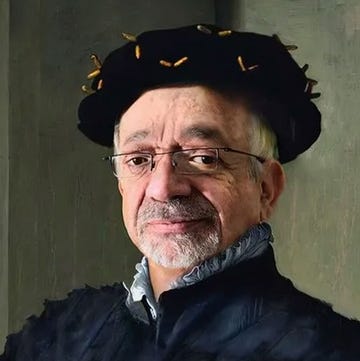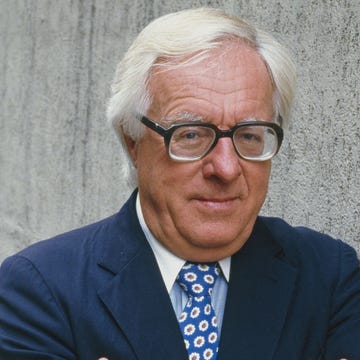Chemistry is hard to define. Is it the way Lauren Bacall, who started life as Betty Bacall, looks Humphrey Bogart up and down when she first meets him in The Big Sleep? Is it their proximity? The rhythmic patter of their dialogue? Perhaps chemistry is nothing more than the sum of two people’s individual charismas sparking against each other. Whatever the case, William J. Mann’s enjoyable and comprehensive Bogie and Bacall: The Surprising True Story of Hollywood’s Greatest Love Affair complicates the mythology of the couple without fatally endangering it for those who prefer magic to mechanics.
Mann’s work grows out of the recent opening of Bogart’s personal and business files. The author reflects on the gender roles each star fulfilled and what they might have been looking for from each other. In the process, he portrays desires that were intermittently met but also deepened the couple’s emotional entanglements as they were dealing with studio contracts and anticommunist investigations.
The first section, “Humphrey,” covers the period from 1899 to 1935 and is devoted to the building blocks of Bogart’s psychological makeup. Contrary to popular image, Bogie was privileged and, early in life, was regarded by his parents, Belmont and Maud, as an idler. He was uncertain of what he wanted to do. In thrall to the stage, he became, almost accidentally, involved with the theater as a stage manager, a fact that would later be muffled because his stoic Hollywood persona didn’t allow for such an origin story. He was an alcoholic, the child of an addict and a heavy drinker, and emotionally wounded. Although the public regarded him as tough and cynical because of the roles he played, his status as a well-off white male may have helped him maintain his career after investigation by the House Un-American Activities Committee.
Mann digs deep into the actor’s issues with his mother and how her ambition affected his father, which in turn influenced Bogart’s views of the gender roles required for a steady marriage. He blamed his mother for the failures of his parents’ relationship, admiring her although, in his words, not loving her. “Strong women might be admirable in the abstract, but in his own romantic exploits, he would do his best to avoid them,” Mann writes. Later, considering Bogart’s outlook toward his soon-to-be first wife, Helen Menken, whose star was then rising, the biographer elaborates: “Humphrey feared the sort of diminution that his father had endured and failed to grasp that it was Belmont’s weakness that was the issue, not Maud’s strength.” For all that, though, it’s never entirely clear how the actor’s feelings toward his mother affected his relationships.
One of the prime myths about Bogart and Bacall is that theirs was a singular love. In fact, Bogart fell in love repeatedly and married four times, certain with each one that this was it. He was significantly older than Bacall—25 years—and in Mann’s telling, the age gap made a difference. He’d already been nominated for an Oscar by the time they shot their first movie together, To Have and Have Not. Mann seeds the question lightly, but I wonder whether it was necessary for Bacall to be, in terms of age and stature, behind Bogart in order for him to love her.
Watching the pure sizzle of their four films together, it would be hard to argue that the mythology Bacall created, after Bogart’s death, about their relationship—following in the footsteps of her friend Katharine Hepburn in regard to her own love story—was only calculation. Bacall had a forthrightness, an insouciance in one moment, and a sharpness in the next. Mann, however, repeatedly emphasizes that she was an ambitious careerist and that this drove her desire to control the narrative.
The middle of the book is devoted to her, though it spends less time on psychologizing and more on observations that feel somewhat deducible from her performances. Writing about Bacall before Bogart, Mann highlights her innate personality more than familial or other outside influences. She was, he tells us, “far more savvy, confident, and resourceful than her future husband had been at her age, or really at any age.”
Once the couple gets together, Bogie and Bacall grows more pointed. Mann intelligently contextualizes Bacall’s frustrations with gender and age barriers, but in the effort to remain objective, he misses opportunities. I wonder whether he realized how justified were her concerns about anti-Semitism during her early years as an actor, or how vulnerable she was to the industry’s double standards, however entitled and contemptuous she became. By contrast, he admits Bogart’s many moral failings but is more tender and searching, even when he passes judgment.
Whatever chemistry is, it’s not static. The couple’s emotional infidelities before Bogart’s death in 1957 of esophageal cancer and Bacall’s efforts to find success on Broadway in later years are illustrated thoughtfully. We want to believe in true love. We want to believe in chemistry. Mann’s book is a smart, humane reclamation that lets us keep on believing—while also lifting a veil on the social elements of gender, the nuanced contradictions, and the stipple of sad imperfections that affected both Bogart and Bacall.•
Anita Felicelli is Alta Journal ’s books editor and the author of How We Know Our Time Travelers, Chimerica, and Love Songs for a Lost Continent.













